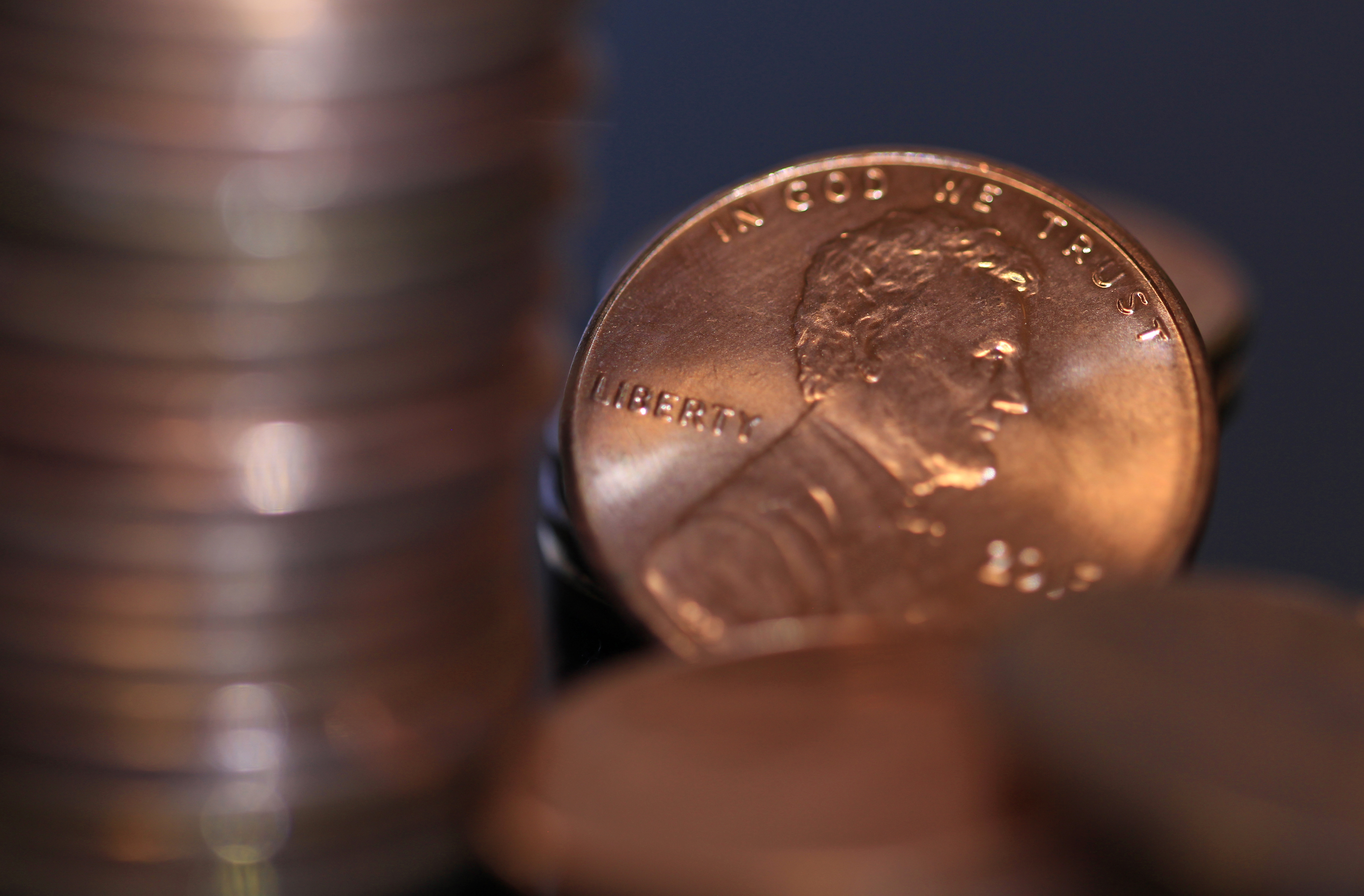These 6 Things Retirees Grew Up With Are Going Away or Are Gone
President Trump wants to cancel the penny, but that's not the only item going away.


The penny is getting canceled and we have President Donald Trump to thank. In a Sunday night post on Trump’s Truth Social social media site, the President said he directed the Treasury Department to stop minting pennies, arguing the cost of producing one penny is more than the coin is worth.
“For far too long the United States has minted pennies which literally cost us more than 2 cents. This is so wasteful!” Trump wrote in a post Sunday night on his Truth Social site. “I have instructed my Secretary of the US Treasury to stop producing new pennies. Let's rip the waste out of our great nations budget, even if it's a penny at a time.”
It’s the latest salvo in Trump’s rapid-fire efforts to cut waste from the federal government, and the penny appears to be a prime example. The U.S. mint lost $85.3 million in fiscal 2024, producing 3.2 billion pennies. What’s more, the U.S. Mint says every penny costs close to $0.037 to make.

Sign up for Kiplinger’s Free E-Newsletters
Profit and prosper with the best of expert advice on investing, taxes, retirement, personal finance and more - straight to your e-mail.
Profit and prosper with the best of expert advice - straight to your e-mail.
While it’s not clear how the penny will be taken out of circulation or if Congressional approval is required, one thing is for sure, the penny isn’t the only thing that is going or has gone away. These six items have or are also becoming a thing of the past.
1. Paper checks
Retirees may have a penchant for writing checks, but thanks to debit and credit cards, digital payments and online payment methods, they are losing their place in modern-day society at a dizzying rate. After all, nobody wants to be stuck behind a person paying for their groceries via check.
Over the past six years the number of checks written has declined at a rate of 7.2% per year. At the peak in 1995, 49.5 billion checks were written annually. As of 2022, it fell to 11.2 billion, a more than 77% decline, according to the Federal Reserve.
Not only is it more convenient to pay with a debit card, credit card or through a digital payment service, it saves businesses lots of money.
Processing a single check can cost a business between $4 and $20 factoring in bank fees, cost of labor and postage, according to a study conducted by Paystand, the B2B payment network. If a business processed 5,000 checks a month that would amount to as much as $100,000.
2. Pay phones
Pay phones used to be everywhere, with more than 2 million dotting America’s landscape at the peak in 1999. Since then, mobile phones have relegated pay phones to relic status.
And mobile phones have taken over for good reason. It’s much easier to make a call on a mobile device than rummaging for coins to make a call on a pay phone. In May 2022, the pay phone's reign ended for good with the last pay phone, located at 745 7th Avenue in New York City, taken out of service. Its new home: the Museum of the City of New York.
3. Digital cameras
For some teens, young adults, and even some millennials, digital cameras have a certain retro appeal. But for most other people, digital cameras aren’t the first thing you’re going to grab when snapping pics. After all, your mobile devices have built in cameras with technology that is much better at capturing clear and up close images than a digital camera ever could.
At its peak in 2010 about 120 million digital cameras were sold in the U.S. alone. As of the end of 2024, sales of digital cameras were at 8.4 million.
Fans of digital cameras like the aesthetic of the photos produced by digital cameras, plus they force users to be more selective when taking photos because of the limited memory of digital cameras. For everyone else: convenience trumps aesthetics.
4. Paper airline tickets and boarding passes
Paper airline tickets and boarding passes are still available from most airlines, but they prefer passengers to go digital.
After all, scanning a digital ticket is easier and cheaper for the airlines. While tech savvy travelers appreciate the convenience, older adults may struggle with the transition.
While Emirates Airlines is the only airline to announce it will no longer accept physical boarding passes, Alaska Air has made it more difficult, removing boarding pass printing kiosks from its terminals. The airline’s goal by removing them is to get passengers ready to go through security in no more than five minutes.
5. Business cards
Everything else has gone digital so it’s not surprising that paper-based business cards are losing their luster. And that was even before COVID-19, but since then, the number of business cards printed has been estimated to have declined by 70%.
Replacing business cards, which often get tossed in a draw or thrown out, are digital business cards. These are a copy of the paper business card but they can be shared between digital devices via a QR code or text and email link.
6. Desktop computers
Unless you are a hardcore gamer or graphic designer, chances are you have no use for a clunky desktop computer and monitor taking up space.
While desktop computers changed the world, they have been replaced by laptops and mobile devices. The iPhone and Androids of today are just as powerful as desktop computers, reducing the need for these bigger machines. Sales of desktop computers peaked in 2010 and have steadily declined since then.
Related content
Get Kiplinger Today newsletter — free
Profit and prosper with the best of Kiplinger's advice on investing, taxes, retirement, personal finance and much more. Delivered daily. Enter your email in the box and click Sign Me Up.

Donna Fuscaldo is the retirement writer at Kiplinger.com. A writer and editor focused on retirement savings, planning, travel and lifestyle, Donna brings over two decades of experience working with publications including AARP, The Wall Street Journal, Forbes, Investopedia and HerMoney.
-
 How Baby Boomers and Gen Xers Are Redefining Retirement Living
How Baby Boomers and Gen Xers Are Redefining Retirement LivingBoth generations need to embrace change and leverage real estate as a dynamic asset in their retirement planning. Here's how financial advisers can help, too.
By David Conti, CPRC Published
-
 How Good Advisers Manage Risk in Challenging Markets
How Good Advisers Manage Risk in Challenging MarketsThey understand the difference between what might be real challenges to an investor's strategy and fear brought on by market volatility.
By Ryan L. Kirk, CFA® Published
-
 How Baby Boomers and Gen Xers Are Redefining Retirement Living
How Baby Boomers and Gen Xers Are Redefining Retirement LivingBoth generations need to embrace change and leverage real estate as a dynamic asset in their retirement planning. Here's how financial advisers can help, too.
By David Conti, CPRC Published
-
 How Good Advisers Manage Risk in Challenging Markets
How Good Advisers Manage Risk in Challenging MarketsThey understand the difference between what might be real challenges to an investor's strategy and fear brought on by market volatility.
By Ryan L. Kirk, CFA® Published
-
 Best Places for LGBTQ People to Retire Abroad
Best Places for LGBTQ People to Retire AbroadLGBTQ people can safely retire abroad, but they must know a country’s laws and level of support — going beyond the usual retirement considerations.
By Drew Limsky Published
-
 Financial Planning's Paradox: Balancing Riches and True Wealth
Financial Planning's Paradox: Balancing Riches and True WealthWhile enough money is important for financial security, it does not guarantee fulfillment. How can retirees and financial advisers keep their eye on the ball?
By Richard P. Himmer, PhD Published
-
 A Confident Retirement Starts With These Four Strategies
A Confident Retirement Starts With These Four StrategiesWork your way around income gaps, tax gaffes and Social Security insecurity with some thoughtful planning and analysis.
By Nick Bare, CFP® Published
-
 Six Reasons to Disinherit Someone and How to Do It
Six Reasons to Disinherit Someone and How to Do ItWhether you're navigating a second marriage, dealing with an estranged relative or leaving your assets to charity, there are reasons to disinherit someone. Here's how.
By Donna LeValley Published
-
 Should You Still Wait Until 70 to Claim Social Security?
Should You Still Wait Until 70 to Claim Social Security?Delaying Social Security until age 70 will increase your benefits. But with shortages ahead, and talk of cuts, is there a case for claiming sooner?
By Evan T. Beach, CFP®, AWMA® Published
-
 Retirement Planning for Couples: How to Plan to Be So Happy Together
Retirement Planning for Couples: How to Plan to Be So Happy TogetherPlanning for retirement as a couple is a team sport that takes open communication, thoughtful planning and a solid financial strategy.
By Andrew Rosen, CFP®, CEP Published